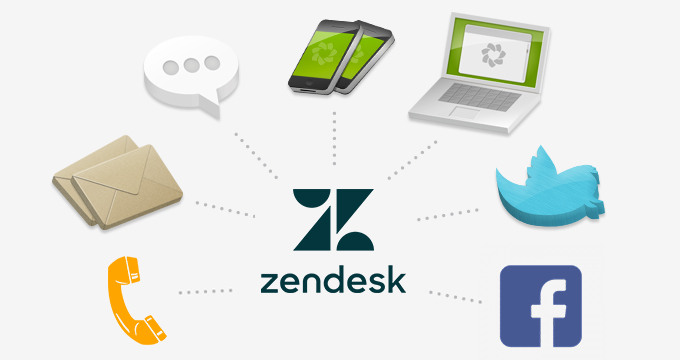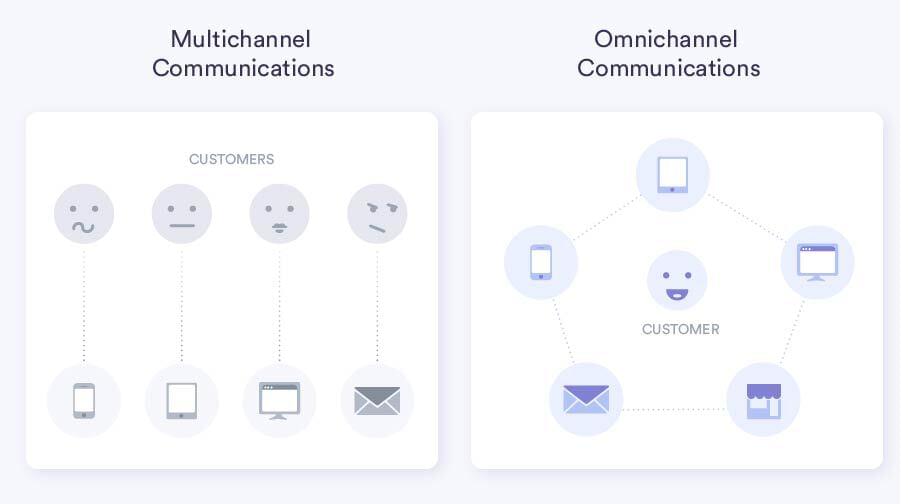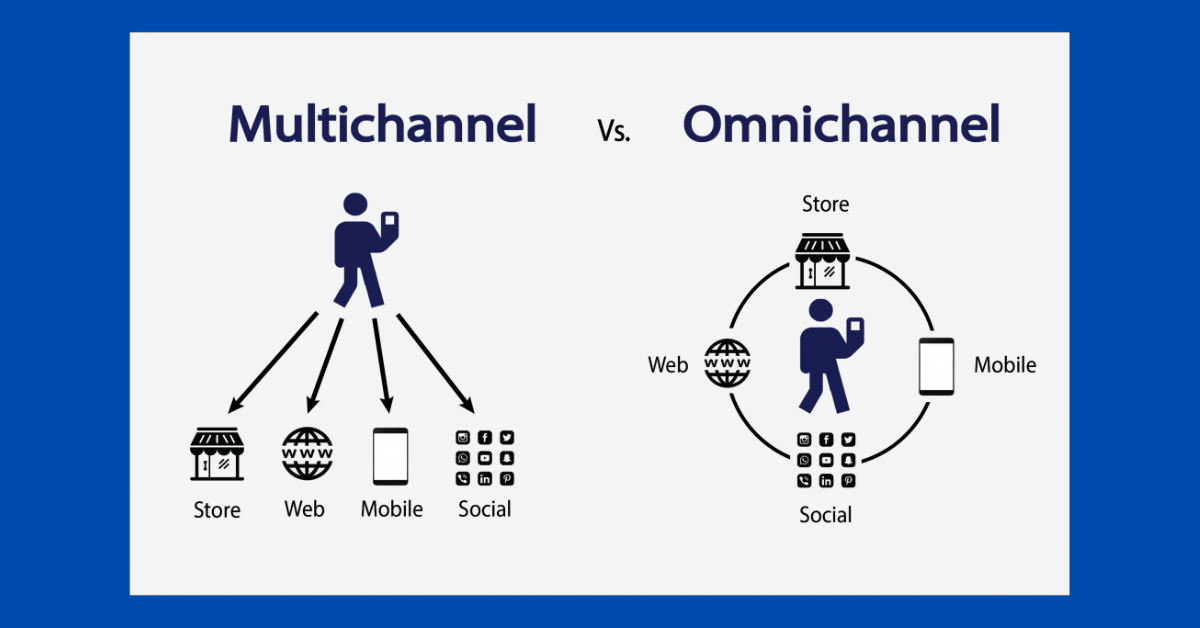Learn how omnichannel differs from multichannel and what a good omnichannel experience looks like.
High performing teams are more than twice as likely as underperforming teams to be taking an omnichannel customer service approach, according to Zendesk’s Customer Experience Trends Report, 2020.
Yet Zendesk findings also revealed that only 35 % of Benchmark companies have an omnichannel strategy in place. This gap represents a sweet spot where businesses can rise above their competition and differentiate on the basis of customer experience.
Success starts with understanding how omnichannel differs from multichannel—and why that matters. It also requires a business to determine how an omnichannel customer service strategy can create a better experience for its customers, agents, and other teams across the organization.

What is omnichannel customer service?
Omnichannel (sometimes spelled omni-channel) is a customer experience strategy that creates connected and consistent customer interactions across channels.
When businesses take an omnichannel approach to the customer experience, they end siloed conversations by consolidating channels and customer context coming from those channels under a single source of truth. This enables teams to reference the customer information they need, when they need it—regardless of channel.
What is the difference between Multichannel vs Omnichannel?
Plenty of companies today boast about providing “omnichannel” experiences but what they usually mean is simply “multi-channel.”
- Multi-channel means being everywhere your customers are. That’s table stakes.
- Omnichannel means going a step further and providing a consistent communications journey for your customer, one where the conversation history and context travels with them from channel to channel.

But context is frustratingly tricky to maintain in a world of countless disconnected communication channels, from chat apps like Facebook Messenger, Line and WhatsApp, to email, SMS, mobile and web chat, not to mention the growing legion of voice assistants.
While it’s tempting for businesses to view the proliferation of channels as an inconvenience, the truth is, not all channels are created equal. In real life, a crowded bar might be a good place to start a conversation but it’s nice to be able to move somewhere quieter for more privacy.
In other words, every conversation has its proper place.
True omnichannel means giving businesses the ability to talk to the right customers, in the right place, without sacrificing context along the way.
Keep context at the center of every conversation
Today businesses have the tools to invite users to move a conversation to a channel that is better suited to the topic at hand.
By posting a link or call to action into the conversation, businesses can invite customers to join them on a more secure channel, a cheaper channel, one with a richer experience or one that’s simply more convenient for the user.
With an omnichannel messaging platform like Zendesk, businesses can easily transfer the conversation from a chat app to in-app or web chat, from an email to SMS — or any other combination that makes sense. In fact, businesses can provide customers with a set of choices for where they’d like to continue the conversation or get notified of a reply later on.
When the conversation moves, the chat history and context moves with it, so both the business and its users benefit from a single, continuous, cross-channel conversation thread. Meanwhile, the user’s identity is unified in the business’ software, allowing brands to provide a truly omnichannel and personalized experience.
Advantages of an omnichannel strategy
When companies know who they’re talking to and what information that customer (or prospect) has already shared with them, they can:
- Resolve issues faster
- Deliver more personalized experiences
- Better identify opportunities to satisfy customers
- Reduce churn or increase revenue
It’s a better experience for everyone.
Examples of a good omnichannel customer service
There are different kinds of omnichannel experiences, depending on your customers’ needs and expectations. Beyond communications, the term omnichannel is used in retail and marketing as well. Although the specifics are different, the concept is fundamentally the same: one consistent experience regardless of channel.
An e-commerce company might enable customers to purchase through channels beyond its website, such as inside a messaging thread of a social channel or mobile app while a SaaS company might provide technical support over a mix of channels like email, the phone, and via a chatbot.
But what all good omnichannel experiences have in common is that they create a cohesive journey for the customer as they cycle through channels. Here are 3 examples.
- UGG® creates a winning omnichannel retail experience
Omnichannel retailing connects a customer’s online, mobile, and in-store visits.
“Click and Collect” and “Click and Reserve” services are one example of how a retailer can build an effective omnichannel shopping experience.
UGG® enables a customer to purchase boots online and have them shipped to their local store.
Since digital channels are integrated with a customer’s in-store visits, customers receive a text message to their mobile device when their order is ready and are sent an automated customer service survey after they pick it up.
- LimeBike implements a customer-centric omnichannel marketing strategy
Omnichannel marketing requires a business to connect customer data from touchpoints and departments across the organization to ensure a consistent experience that genuinely benefits the customer.
At LimeBike, customer support information is centralized throughout the company. This allows marketing teams to use customer service data to drive engagement through segmented campaigns over a variety of marketing channels. As a result, both existing and potential customers only get offers relevant to their experience with LimeBike.
- Wrike delivers excellent omnichannel customer service
One benefit of omnichannel customer service is the ability to offer both live and asynchronous channels—and create an integrated experience across those channels.
Wrike offers real-time communication channels like live chat and the phone as well as channels like email and social media that allow customers to pick up a conversation at their own convenience. It also has a help center and community forum to enable customers to self-serve.
All these channels are connected under Wrike’s customer service software, which consolidates reporting and ensures agents don’t have to context-switch.
In other words; agents have the customer information they need to resolve every issue quickly and effectively no matter how, or when, a customer reaches out. That way, a customer doesn’t have to repeat information like their account type, phone number, or previous problem every time they interact with an agent on a different channel.
Bring true omnichannel conversations to your customers
Over the past few years, there’s been a ton of hype around messaging technology and how it’s transforming the customer experience. But the fragmented nature of the space makes it complicated for businesses to harness the full potential of messaging.
With Zendesk, you can turn the promise of truly omnichannel experience into reality.
Learn more about Zendesk
Contact Us: Demeter ICT Company Limited, No.1 Zendesk Authorized Solution Provider in Thailand and APAC
LINE OFFICIAL

-
For additional information and special promotion call now!
Tel. +66 2 030 0066 (TH/EN)
Tel. +86 14778852841 (CH) - Facebook Page : @demeterict
- support@dmit.co.th




